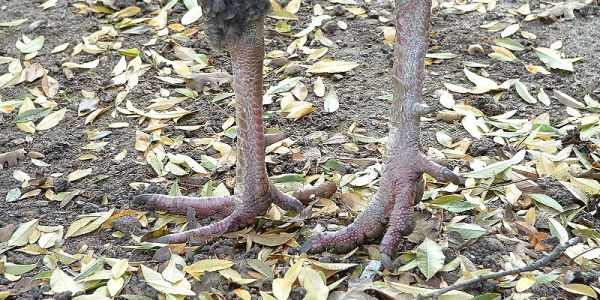Turkeys are great. You probably had a similar thought yesterday, but Benjamin Franklin was contemplating the greatness of turkeys hundreds of years ago. He said that the turkey is a, “respectable Bird, and withal a true original Native of America… He is besides, though a little vain & silly, a Bird of Courage, and would not hesitate to attack a Grenadier of the British Guards who should presume to invade his Farm Yard with a red Coat on.”
To be fair, Franklin had a wry wit, and this was more of a jab at the U.S. seal for implementing a bird than it was an ode to the turkey. But, the turkey truly is great, and as it turns out, is actually helping the field of robotics.
Roboticists looking for help from nature is nothing new. Robot actions like jumping and flying have been aided by kangaroos and falcons. MIT’s running robot, called Cheetah, was designed by observing the mechanics of the cheetah’s running pattern. But researchers from Oregon State University, Royal Veterinary College, and other institutions think that there is a better way to develop running robots.
Think about it: cheetahs are designed with pure speed in mind. They run at top gear for short periods of time, and then require a long time to recover. They aren’t very efficient. However, it turns out that running birds, like the turkey, are incredibly efficient
Running birds are at the head of the class when it comes to running. They don’t have the blinding pace of a cheetah (although, the ostrich can run a zippy 30 mph), but what they lack in speed, they make up for in minimizing energy exertion, maintaining speed and direction, and avoiding injuries and falls.
So what can a robot learn from a squat little turkey?
There’s a pretty big interest in bi-pedal and humanoid robots at the moment, and stability is one of the biggest obstacles. Running birds maintain their stability, despite their dynamic, bouncing movements. Not only are these birds stable, but they are more efficient that any other biped on the planet, including human beings. The researchers working with these birds are hoping that future robots will consider dynamic stability, which can improve efficiency and mobility.
Thanks, turkeys!
